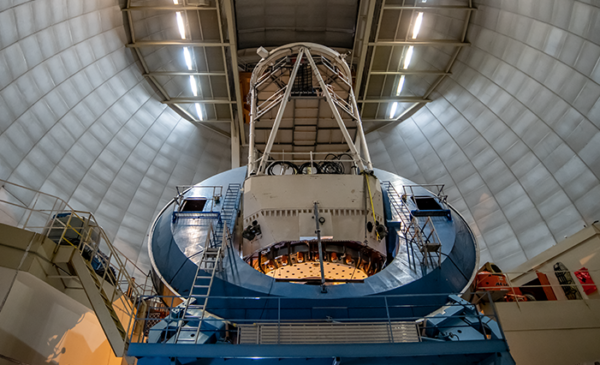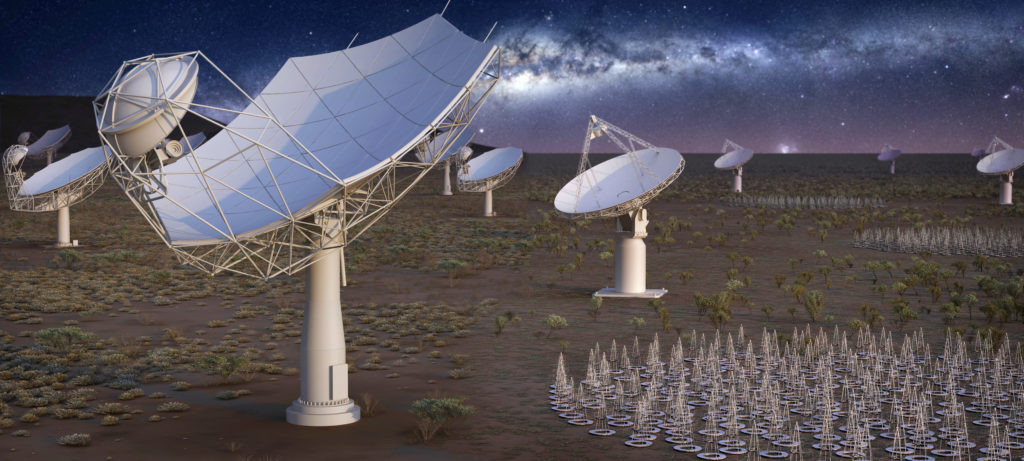Research interests in cosmology at the PKU-SHAO joint center include using large-area, multi-band surveys to address questions related to fundamental physics and cosmology on the nature of dark energy, dark matter and gravity with multiple cosmological probes, including baryon acoustic oscillations (BAO), gravitational lensing, clusters of galaxies, active galactic nucleus (AGNs), and so on. Within this context, scientists in the PKU-SHAO joint center are involved in several major projects such as DESI, CSST, LSST and SKA.

DESI is a multi-fiber optical spectrograph funded by the U.S. Department of Energy Office of Science. It will be conducted on the Mayall 4-meter telescope at Kitt Peak National Observatory. DESI will obtain optical spectra for tens of millions of galaxies and quasars, constructing a 3-dimensional map spanning the nearby universe to 11 billion light years. It will measure the effect of dark energy on the expansion of the universe, via various techniques such as the measurement of baryon acoustic oscillations.

Next-generation survey projects such as CSST (the Chinese Space Station Telescope ) and LSST (Large Synoptic Survey Telescope) will probe an enormous volume of the universe and open up huge discovery space. In particular, the CSST plans to cover 17,500 square degrees of the extragalactic sky at a resolution of 0.15" in at least 6 bands from 250nm to 1000nm, reaching an average depth of AB 25.5 mag. Low resolution slitless spectra will be taken at the same time over the same area reaching depths of AB 20-21 mag per wavelength resolution. The LSST will image billions of objects in 6 bands and will cover over half the sky. It will also record the time evolution of these sources. The two large projects aim to address the science goal of understanding dark matter and dark energy by the combination of multiple probes, in particular weak lensing and galaxy clustering.

The Square Kilometre Array (SKA) project is an international effort to build the world’s largest radio telescope. The SKA will comprise of two arrays, i.e., a mid-frequency dish array (SKA-MID) to be built in South Africa, and a low-frequency array of log-periodic antenna elements (SKA-LOW) to be built in Australia, totally covering the frequency range from 50 MHz to 20 GHz. It will be built in two stages. The phase 1 of SKA (denoted as SKA1) will begin construction in 2021 (lasts from 2021 to 2028), and the phase 2 of SKA (denoted as SKA2) will start construction after 2028. One of the primary science objectives of the SKA is to explore the first billion years of the universe, with a special focus on the cosmic dawn (CD) and the epoch of reionization (EoR).